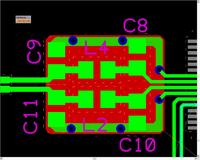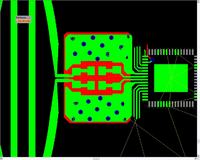alexxx
Advanced Member level 4

Hi!
I use ATMEL ZigBit Modules the past 1.5 year, and now I think I will move on to ATmega128RF design (wireless MCU). It is my first touch with the RF analog part.
So about the RF part of the design. It is differential from the MCU (RFP, RFN), it will not include a BalUn and the antenna will be a pcb antenna. I use Atmel RZRaven Boards as reference. At page 14 of Hardware User's guide, in the RF output path, 6 passive components are involved, 4 capacitors and 2 inductors.
What is their use? What will happen if I don’t place them? What will happen if their values are not the same as the reference design?
Thanks in advance.
I use ATMEL ZigBit Modules the past 1.5 year, and now I think I will move on to ATmega128RF design (wireless MCU). It is my first touch with the RF analog part.
So about the RF part of the design. It is differential from the MCU (RFP, RFN), it will not include a BalUn and the antenna will be a pcb antenna. I use Atmel RZRaven Boards as reference. At page 14 of Hardware User's guide, in the RF output path, 6 passive components are involved, 4 capacitors and 2 inductors.
What is their use? What will happen if I don’t place them? What will happen if their values are not the same as the reference design?
Thanks in advance.





